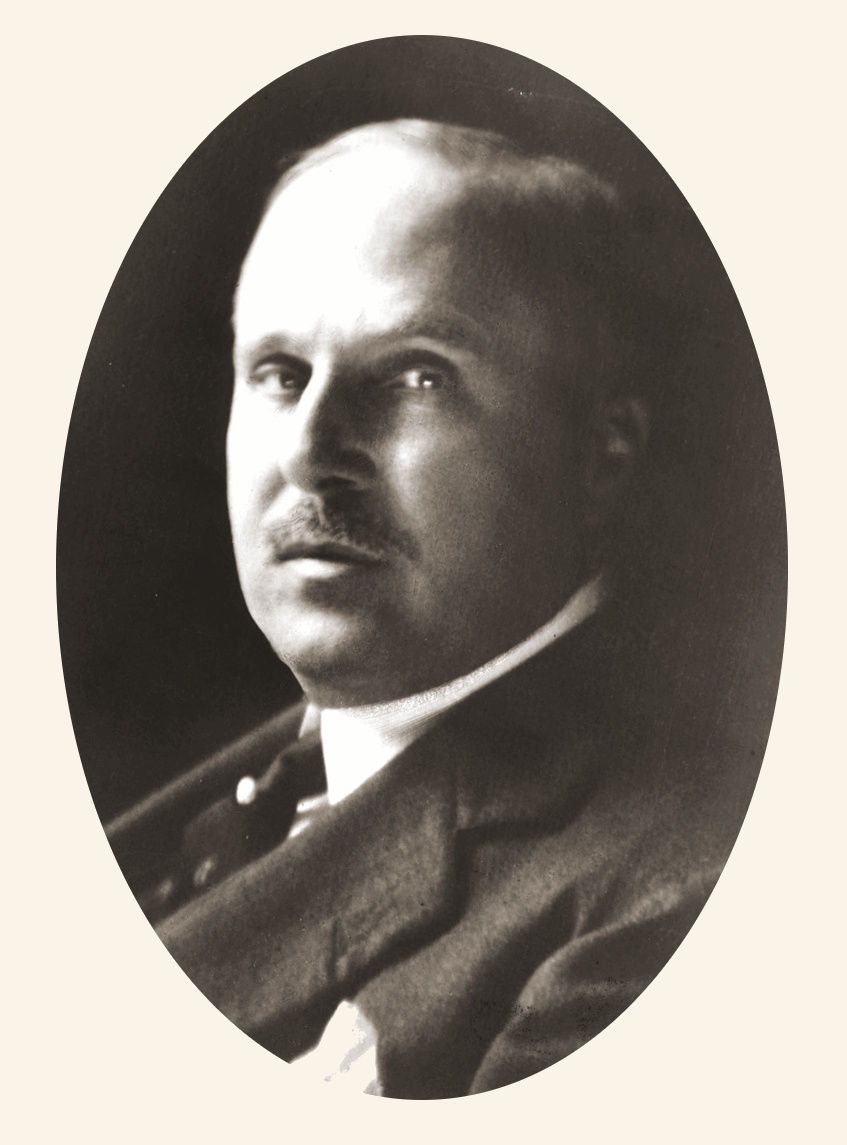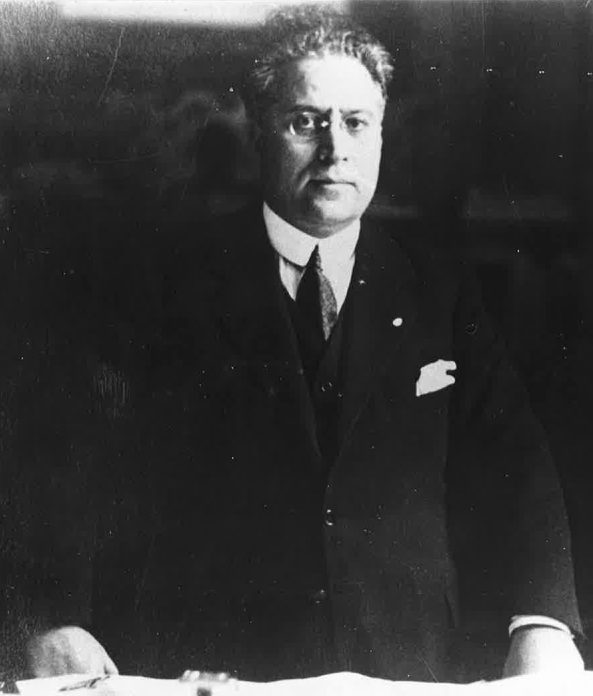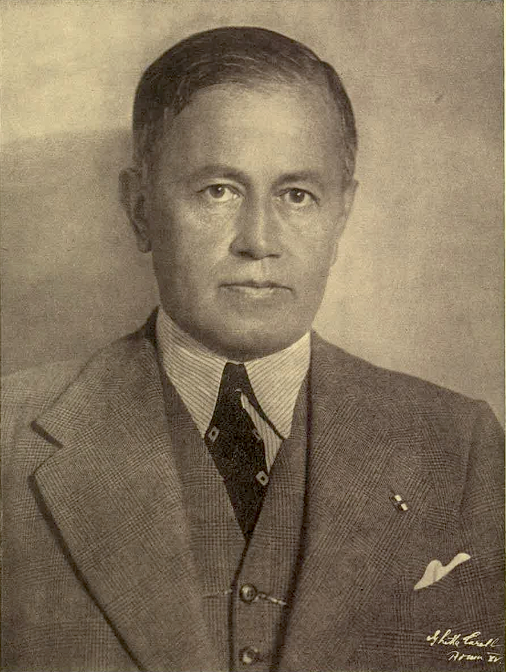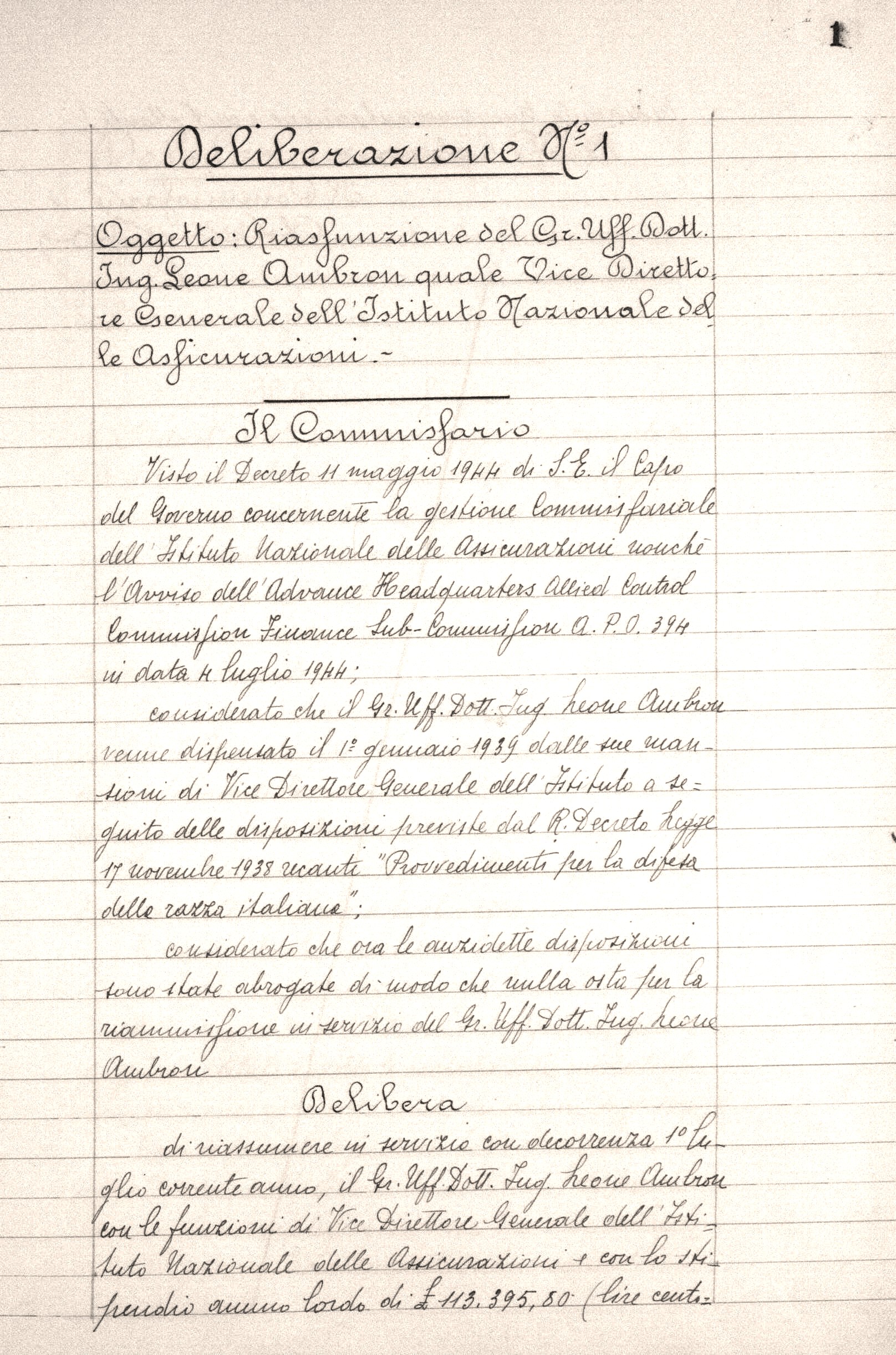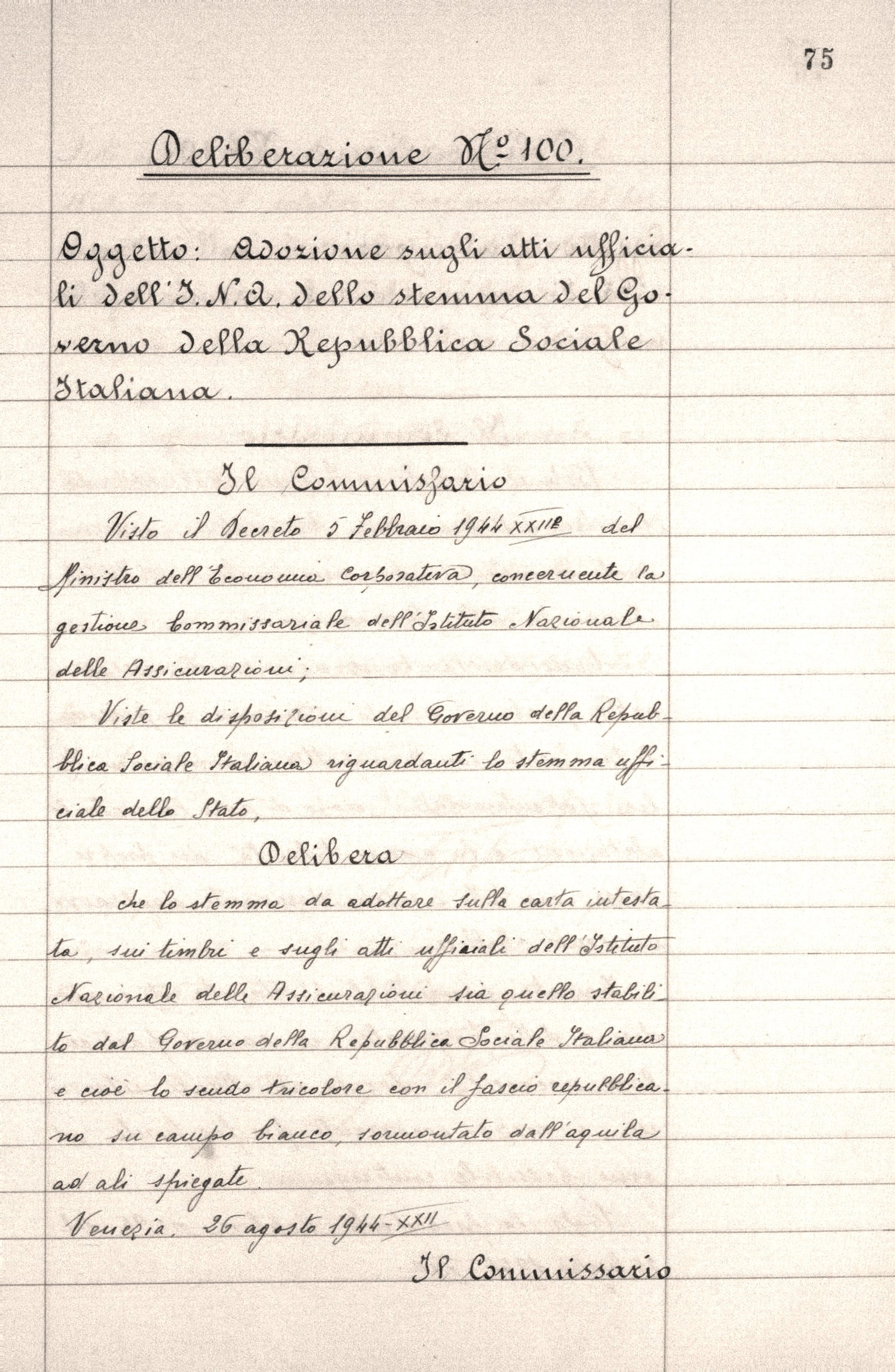At the heart of things: the INA Minutes
25 May 2021
The minutes of both the Board of Directors and the Standing Committee of the Istituto Nazionale delle Assicurazioni (INA) provide the official record of the choices and decisions made by the institute under various management regimes.
They make it possible to reconstruct the activities of the national institute in its various areas of operation, from voluntary retirement plans to State-managed segregated funds, from property investment to management of personal assets. They furnish abundant information on figures from INA’s past, including CEOs, senior managers, employees, general agents, insurance producers and various external contributors.
The on-going and painstaking work of transcribing the headings of minutes to make information searchable is simplifying research work, and online facilities exist for digital reproduction of documents.
Since databases concerning Stringher and Beneduce are already available, it was considered appropriate to first publish the minutes of the Board of Directors and the Standing Committee dating from INA’s foundation in April 1912 to January 1923, when the presidency of Stringher, a typical figure of the early days of the Istituto Nazionale delle Assicurazioni, came to an end. The year 1923 also marked the end of the transitional period created by the law of 4 April 1912 – repealed by Royal Decree no. 966 of 29 April 1923 – authorising INA to operate the state monopoly on life insurance.
The minutes are particularly important for recording the activities of Guido Toja, an important figure in INA’s history who became General Manager in 1920.
Following on from the publication of the minutes from meetings of the Board of Directors and the Standing Committee from 1923 to 1929, regarding the presidencies and commissionerships of Guido Toja (General Manager from 1920) and Salvatore Gatti, the minutes of the Board and the Standing Committee of the presidency, commissionership and second presidency of Giuseppe Bevione – whose leadership is among the longest in INA’s history, from 1929 to 1943 – are now also being made available to researchers. The minutes from these years enable a deeper study of the INA’s activity as the “financial power of the Fascist state”, as Mussolini defined it in 1933, on the occasion of its 20th anniversary.
Following the long presidency of Giuseppe Bevione and the incredibly short one of Gaetano Scavonetti, nominated by the first Badoglio government (1943-1944), a difficult period came, in which the INA had a dual leadership, with Alberto Ercole Troilo nominated by the Italian Social Republic and Alberto De Liguoro by the so-called Regno del Sud (“Kingdom of the South”). With the war still ongoing, the second Bonomi government (1944) nominated a new (short-lived) board led by Annibale Gilardoni, who began the process of reconnecting the two separate branches of the INA, albeit not without significant challenges along the way, with the board of directors of the organisation relocated to northern Italy, alongside ministries and other public bodies. The return to business as usual came with the definitive reunion of the two parts of the INA and their return to regular administrative and financial operations of the field offices in the organisation’s orbit. This took until the post-war board of directors, led by Giuseppe Micheli, who passed away in 1948 and was replaced by Giulio Sansonetti. With the publication of these latest documents, dating from 1943 to 1951, it is possible to revisit this important period in history in terms of the specific events of the Istituto Nazionale delle Assicurazioni and its activities and contribution on various fronts (insurance, real estate reconstruction, shareholding, special requests and investments in assets) in the broader context of the Italian economy.
The minutes of both of the Board and the Committee, which are indexed, are arranged in chronological order and divided into sections relating to the individual meetings.

